If you wish to explore the previous parts of this retrospective three-part blog series, you can find the Norway blog post here and the Malta blog post here. Now, let’s enjoy Elmiina’s, Liisi’s, Ronja’s, and Tyyne’s travels and learnings from the third summer school in Germany!
Summer School 3: Bochum, Germany, 24-28 March 2025
Welcome back! It’s again Elmiina, Ronja, Liisi, and Tyyne here. For our third and final Erasmus+ and Shape2Gether summer school, we found ourselves in Bochum, a vibrant city nestled in the heart of Germany’s Ruhr Area, one of the country’s largest and most dynamic urban regions. The Ruhr is an area with a fascinating mix of history, innovation, and transformation, offering a unique contrast to the previous locations we’d explored.
Bochum, a mid-sized city with around 365,000 residents, has deep industrial roots in its coal mining days in the 19th and 20th centuries. Today, it’s known not only for its rich history but also as the home of Ruhr University Bochum, one of Germany’s largest and most respected universities. The university’s campus, with its brutalist architecture and striking concrete buildings set against lush green spaces, was the perfect backdrop for our work.
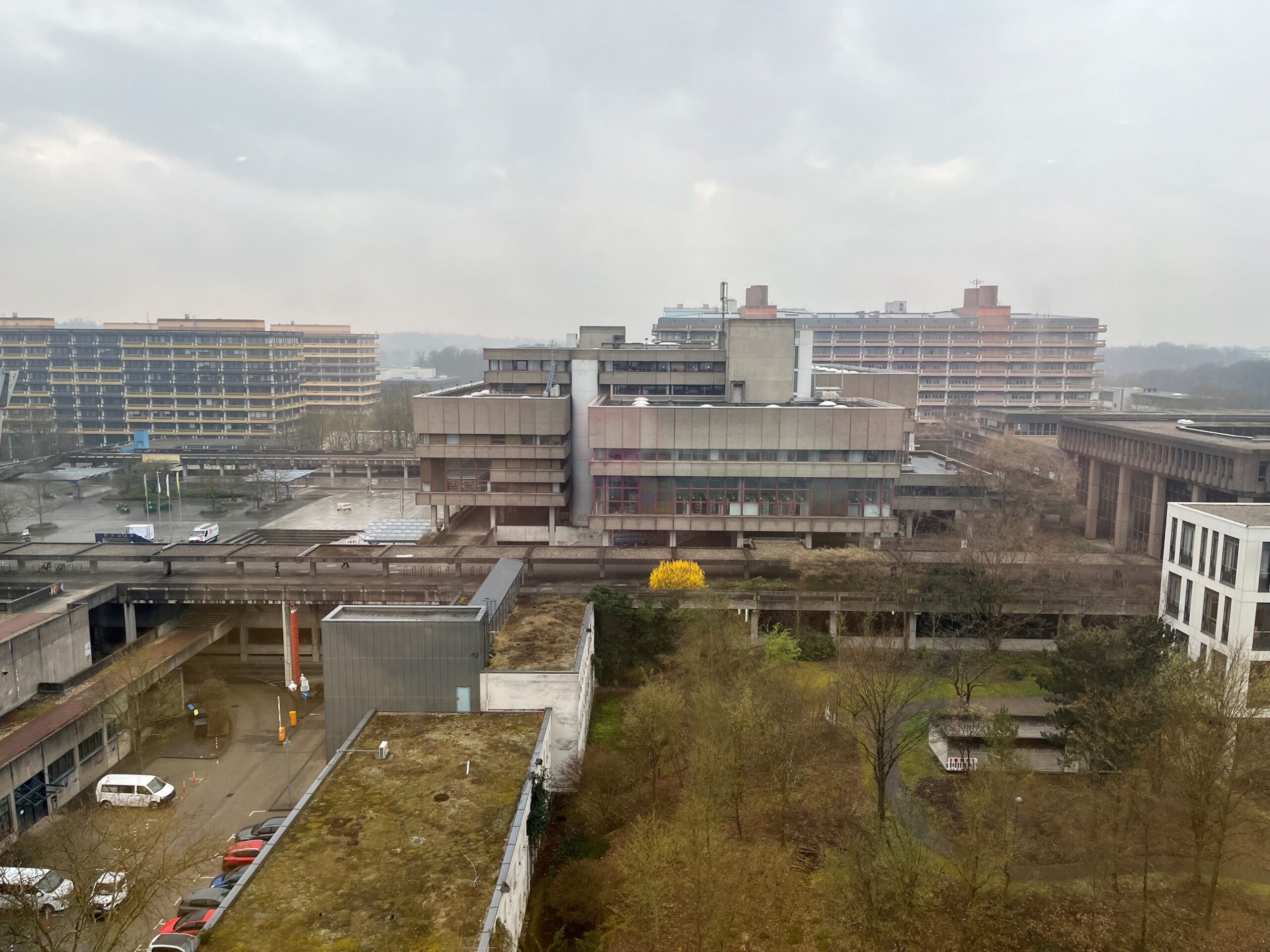
As with previous summer schools, we kicked things off by visiting local sites, soaking up the region’s industrial and cultural heritage. But this time, our focus was on something different: we were tasked with designing an eco-themed game, combining sustainability, systems thinking, and creativity into an interactive and thought-provoking final project.
Hop in to see what we got up to during the week!
Local visits
The two main visits we did during the week were to Zollverein and the River Emscher.
Zollverein is a former coal mine (closed in 1986) and a present United Nations Educational, Scientific and Cultural Organization (UNESCO) World Heritage Site (since 2001), and a museum that introduces the history of coal mining. Since coal mining has been a huge part of the history of the area, Zollverein was a must-see! During our visit to the museum, our guide led us through the mine and told us about the high noise levels the workers had to suffer and about the short life spans of miners, who were exposed to several health threats during their careers. After the mine closed, unemployment became an issue in the area as the mine used to employ many people.
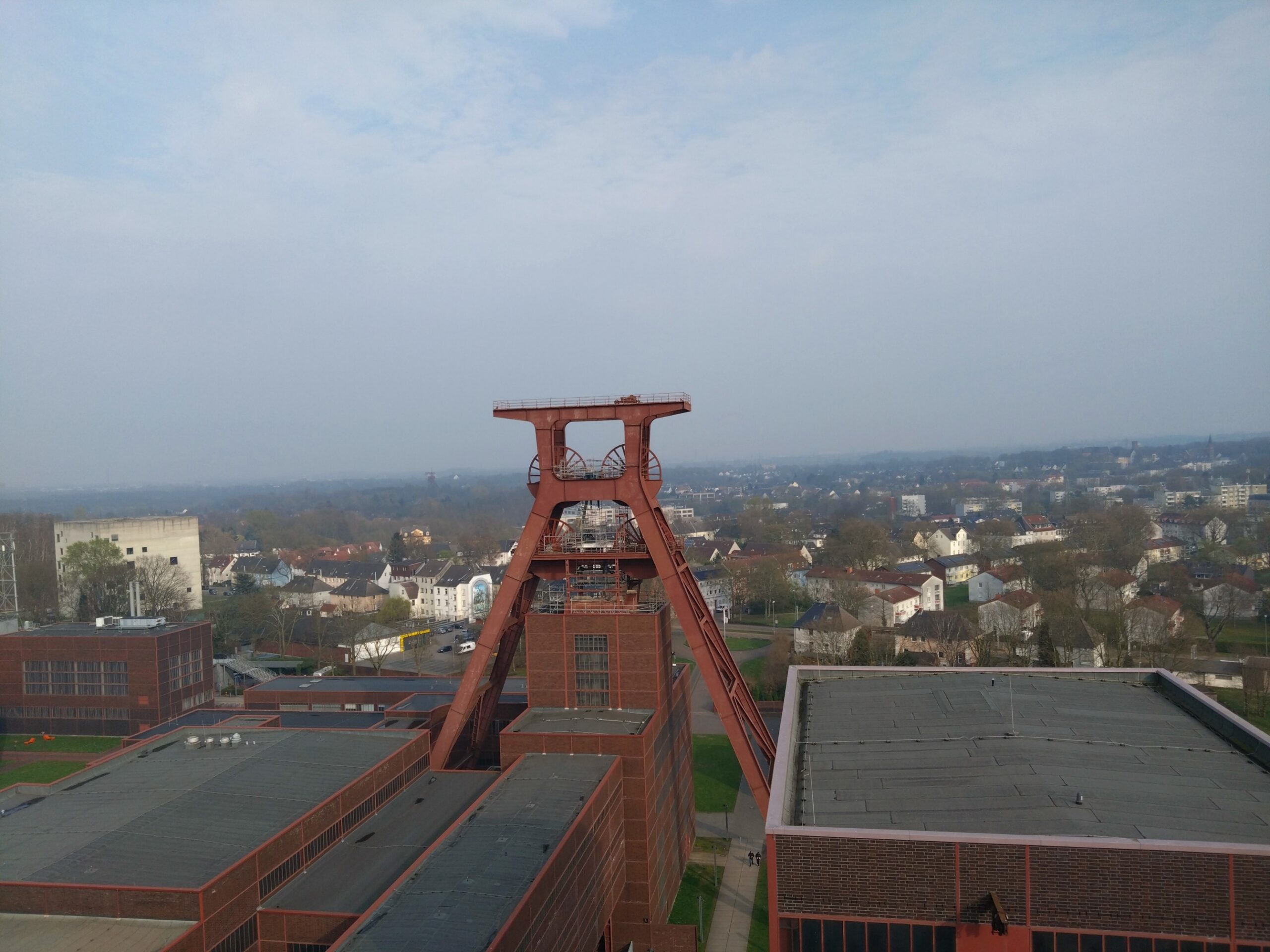
Mining, heavy industry, and urbanization of the Ruhr area have harmed the local environment. The River Emscher is an example of this, as it was used as an open wastewater canal to which people dumped their wastewater, and companies dumped their factory waste. As a consequence, the natural profile of the river was destroyed. Luckily, a huge restoration project of the river was conducted between 1990 and 2020 by the public water board Emschergenossenschaft, improving sewage treatment, natural water flow, and adaptation to floods and dry seasons.
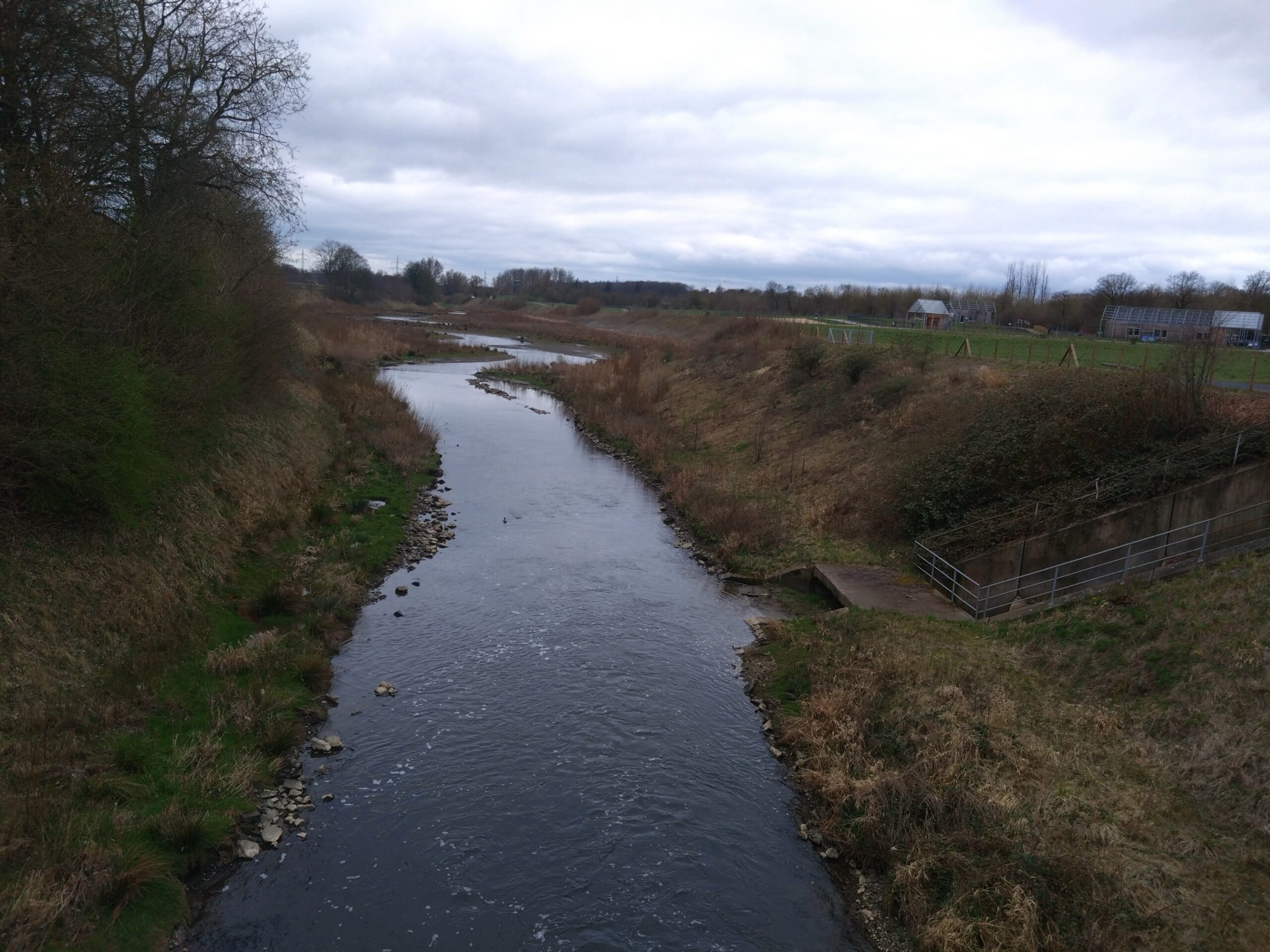
Creating games
This summer school’s goal was to learn how to communicate sustainability challenges through serious learning games. Each group had to come up with an eco-game idea and make a playable prototype during the week. The games needed to connect to the Ruhr area using local data and have an educational purpose, beyond just entertainment. We were free to choose any game format, whether physical, digital, or a mix of both. This seemed tough at first, since we were relatively new to game design. But by the end of the week, we realized that even without coding skills or deep knowledge of game mechanics, game design was within our reach.
Early in the week, we attended lectures on eco games and ways to engage players in sustainability. We learned how games can provoke emotions, highlight consequences, or inspire creative visions of a greener future. One fun exercise during the lectures involved redesigning Monopoly, showing us that modifying existing games can be just as effective as starting from scratch. Field trips around the Ruhr area helped us gather ideas to incorporate real-world context into our games.
Once we had come up with initial ideas for our games, we began creating prototypes. Each group worked differently, as some designed gameboards or cards, and others created tasks on the Seppo platform. However, what all games had to address were sustainability, their link to the Ruhr area, and an educational goal. On Thursday, we gave short pitches about our game ideas and their learning objectives.
On Friday morning, we prepared for the afternoon’s playtesting by printing materials for our prototypes. Unlike past summer schools, where projects were just presented, this time we got to play each other’s games, which was much more interactive compared to the previous summer schools. Playtesting showed that refining point systems and mechanics for games was tricky without prior experience, and the games could be further developed in several ways. However, seeing everyone engage with our creations was a rewarding and fitting end to the Shape2Gether project.
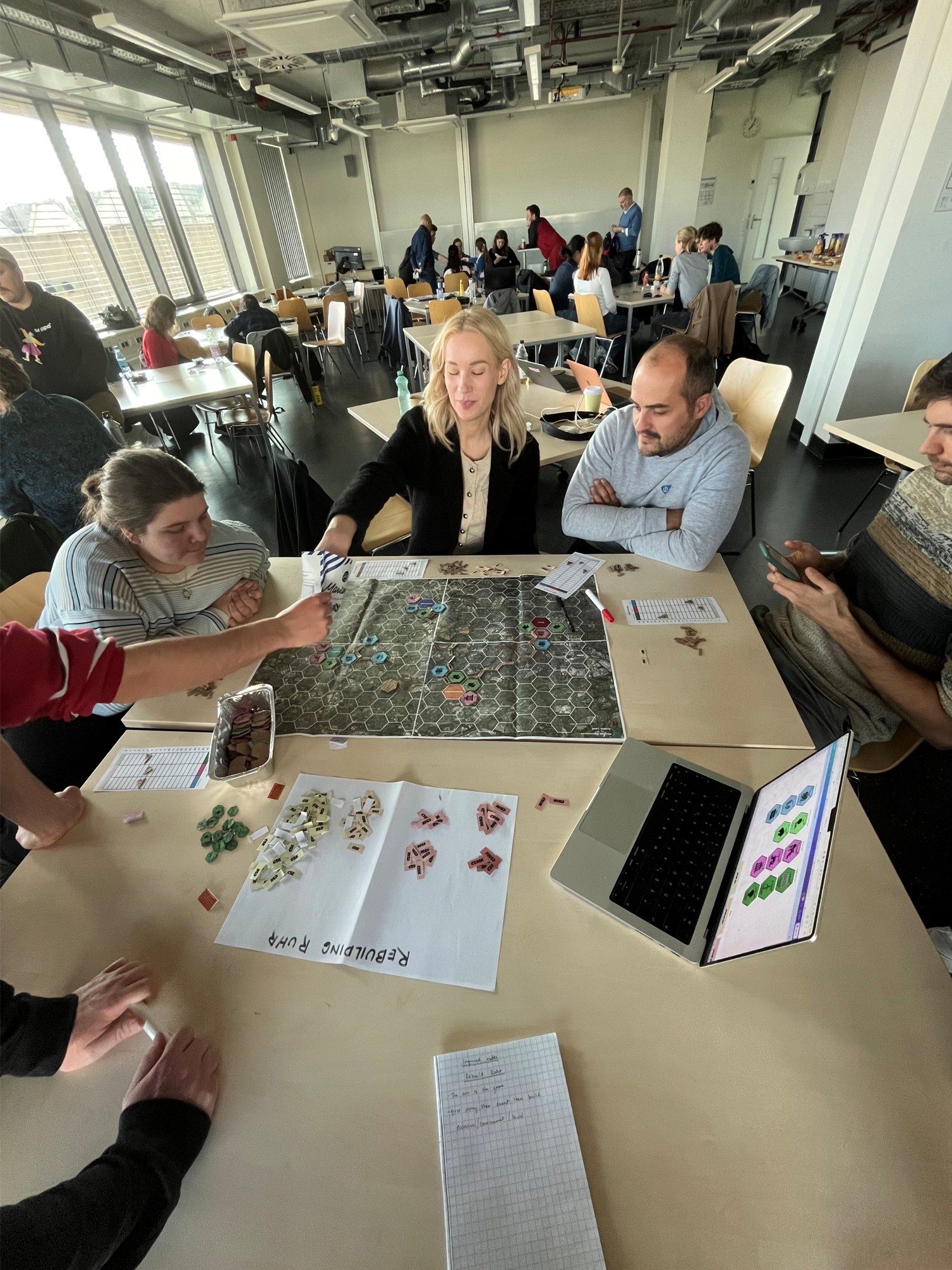
Our own game prototypes
For the group work, all four of us were again divided into different groups. Each group had 4 people working on the game. The groups consisted of different people during all summer schools, which allowed us to get to know as many people as possible. This way, we also saw many different ways of working and communicating. Not to mention getting to know different cultures. Anyway, here’s an introduction to the games we designed:
- Ronja’s group created an educational exploration game using the Seppo platform. The game is focused on the Ruhr area. Players draw cards to determine their role, such as an economist or politician, and navigate different locations—forest, river, settlement, and coal mine—making decisions that impact their path. They collect money and environmental badges while balancing sustainability and profitability. At the end, players reflect on their choices, highlighting the real-world complexity of environmental issues and the need for compromises.
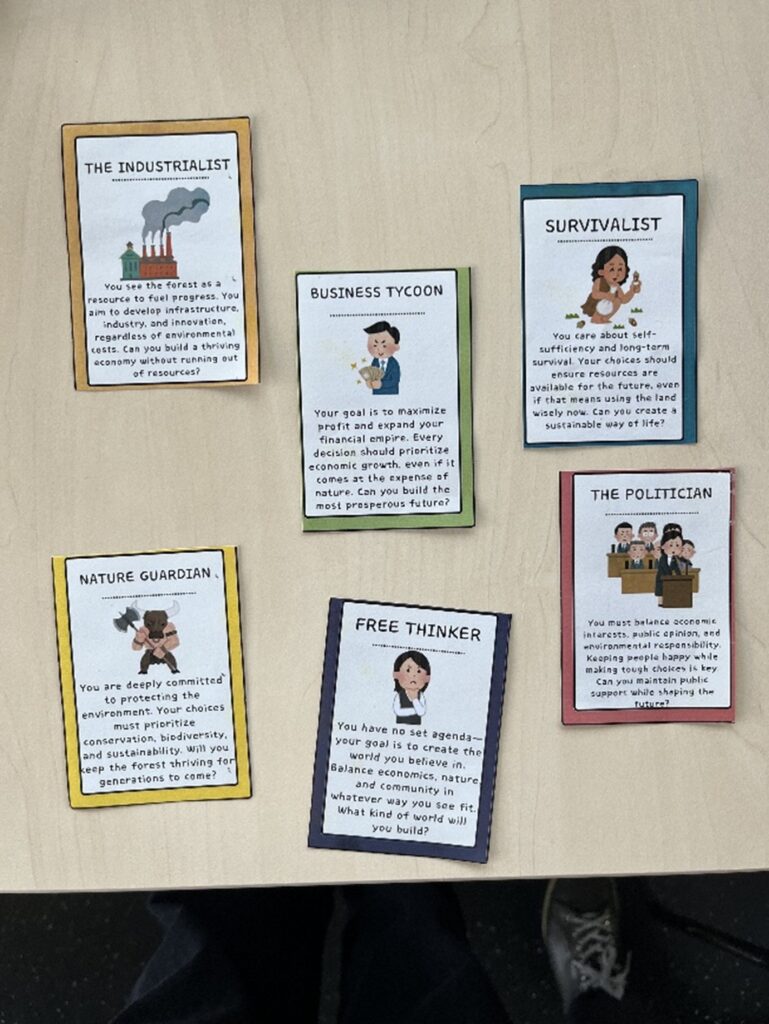
- Elmiina’s group created a board game that took inspiration from existing board games My City and Catan. The created game is located in the Ruhr area, and players are mayors of different cities, who work both independently and together to improve the sustainability of their cities and the area. The game starts with outdated industries and a polluted nature. During the game, players negotiate and use resources to improve the area. The learning goals of the game are to educate the players about sustainable change of land use and highlight the importance of cooperation.
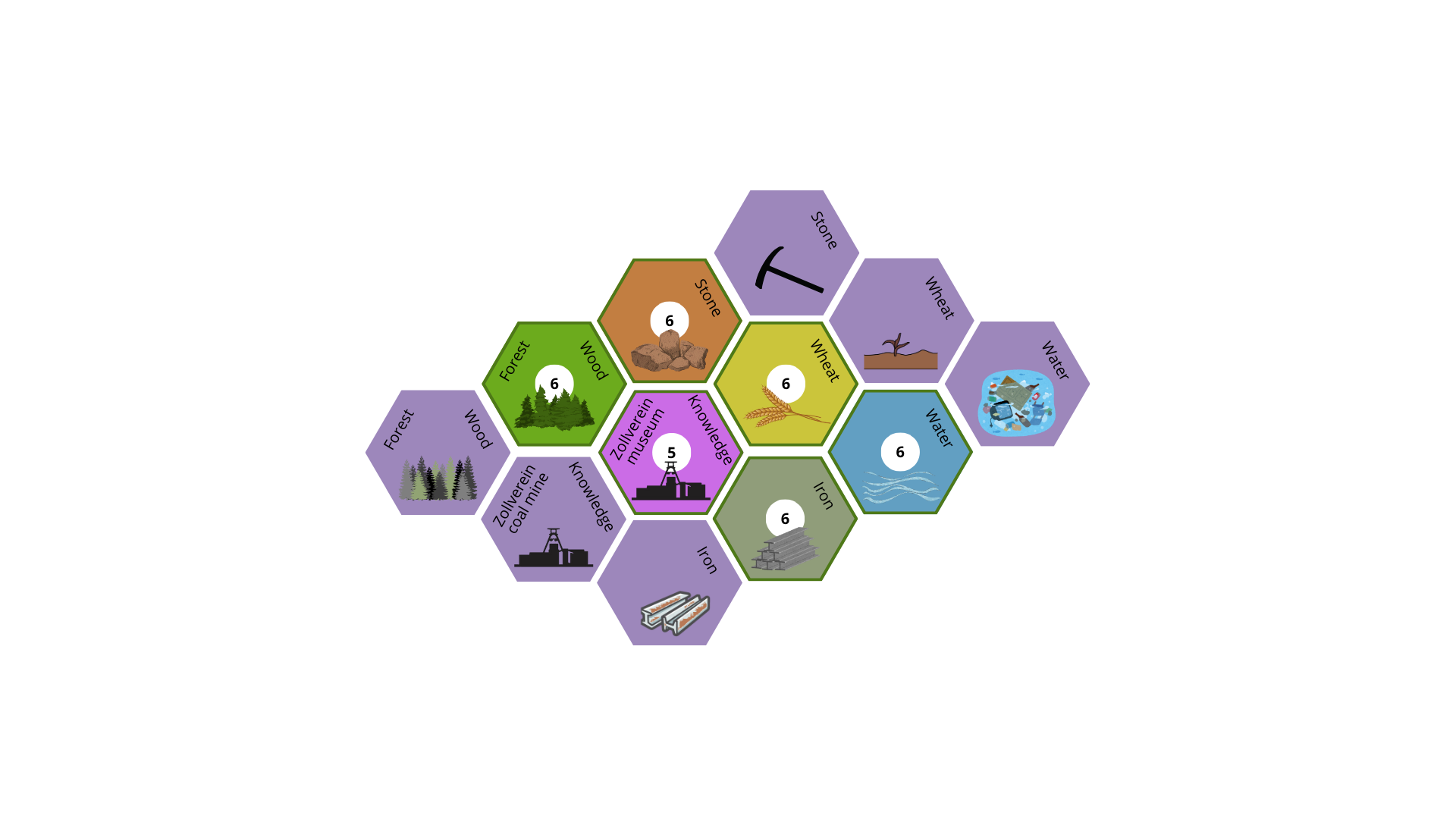
- Tyyne’s group took inspiration for their game from the Zollverein coal mine. The game is a board game in which every player gets a role in the beginning. The basic idea is that the players complete different tasks that are related to the coal mine. Their goal is to get out of the mine by solving problems. The players get more information about the themes based on their role and expertise. This way, they can help each other and solve the problems together. The main learning goals are to learn how to work in a team and learn about the Ruhr area history in the context of coal mining. Learning about sustainability issues related to energy production is also central in the game.
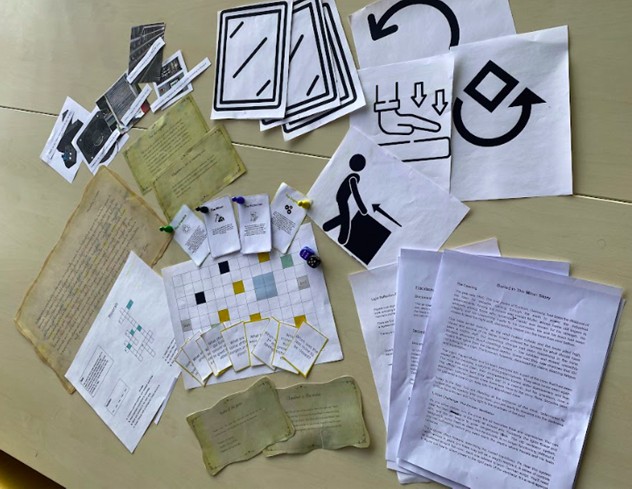
- Liisi’s group came up with a regional planning board game located in the Ruhr area. The game is called ‘Rebuild Ruhr’ and it is inspired by existing board games Catan and Ticket to Ride. The objective of the game is to build a city where all the dimensions of sustainable development are balanced using tiles within these categories. Roads are used to connect the tiles to the city centre. To add an element of surprise, event cards are lifted as well, which can affect the players negatively or positively. The main learning goal of the game is to learn about the importance of balancing the different dimensions of sustainable development and understand how challenging it can sometimes be.
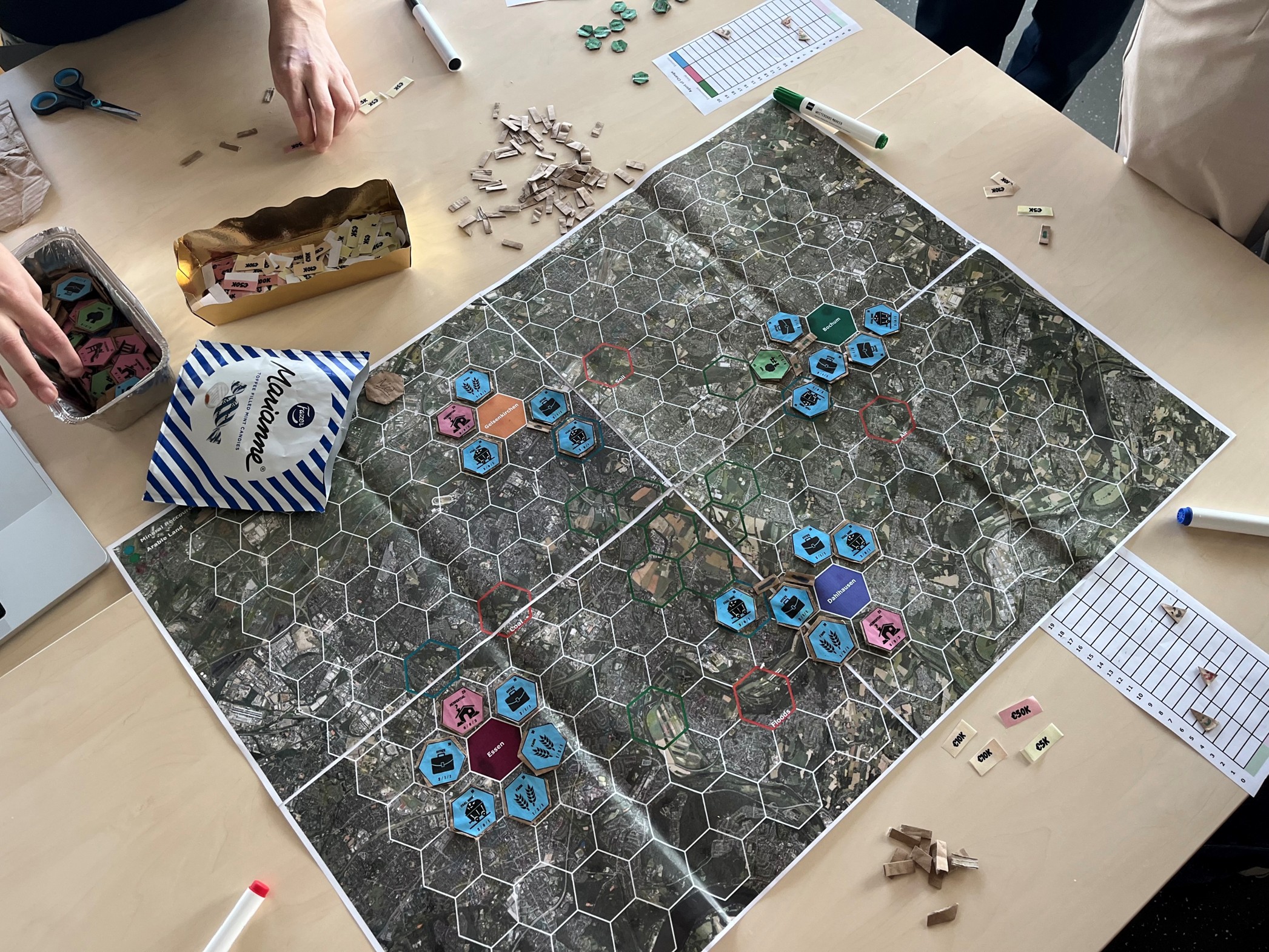
Bowling, beverages, and backyard battles
Besides creating our educational games, we had some free time in Bochum. We started our week with the traditional international dinner, where each country has its own table, and we bring our favorite (and not so favorite) snacks for others to try. We brought some Finnish sima and blueberry jam with us, accompanied by some traditional Finnish chocolates, such as Marianne and Fazer. This time, the international dinner was arranged in one of the students’ home. The best part wasn’t the food, but the bowling alley they had built. On Tuesday evening, we visited a local brewery, Fiege Brewery. We went on a tour inside the brewery and learned about the history of the business and how they make their products. We also got to taste some of their beverages, like elderflower beer, which we liked!
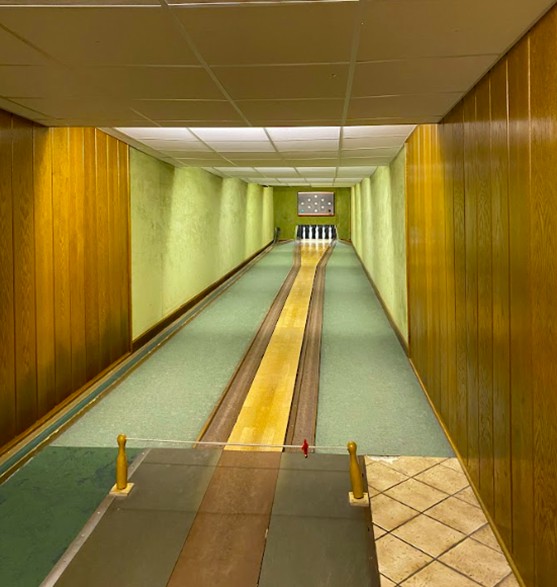
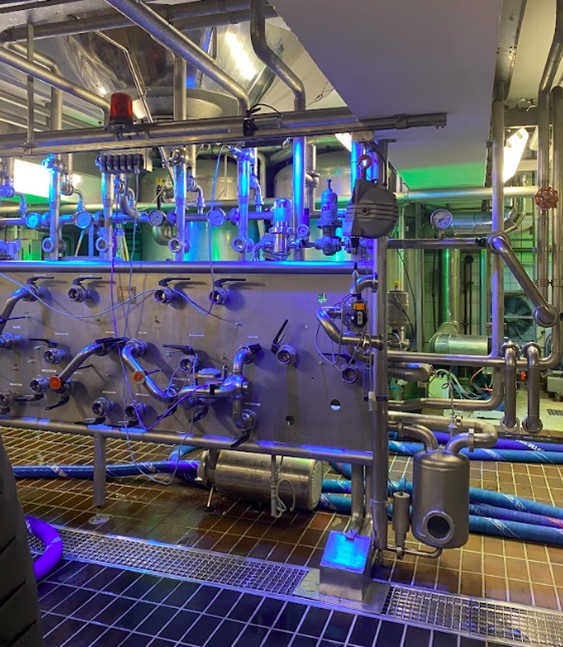
We also got a chance to see Bochum from a more relaxed perspective. On Wednesday, we played an exploration game where we completed different kinds of fun tasks around Bochum city center. This was a nice way to see the city and some of the locals’ favorite places. Unfortunately, our team didn’t win the game, but it was still fun. Thursday evening was sunny and warm, so we headed for a picnic with all the other students. We enjoyed the sunset and played some outdoor games in the park.
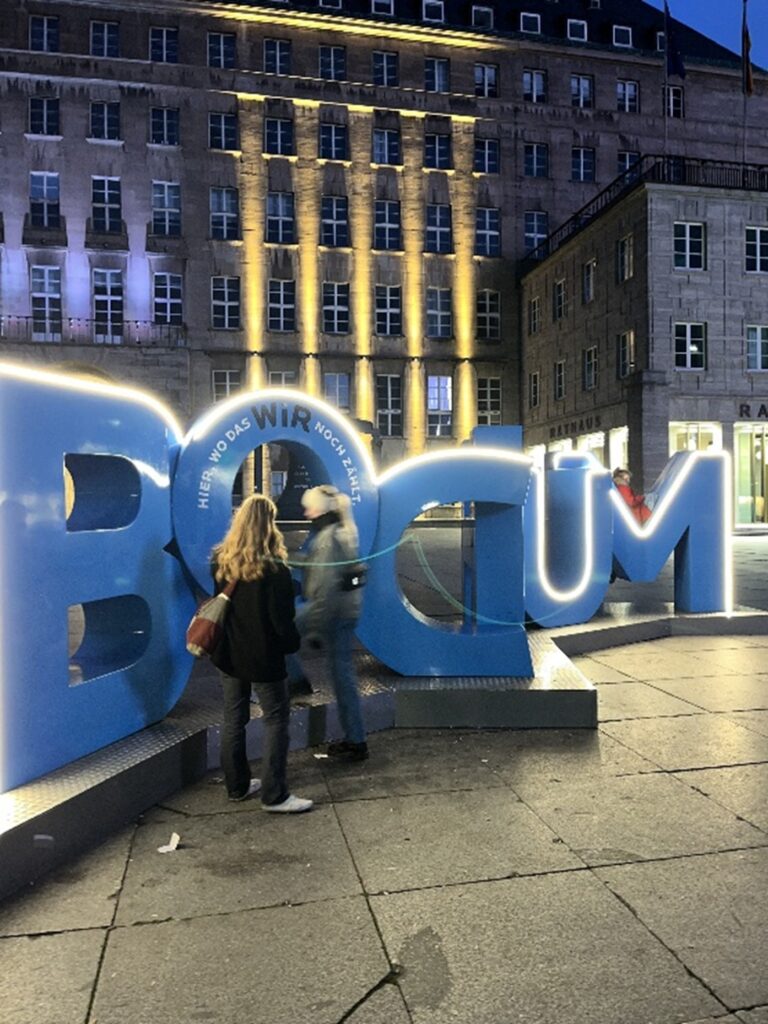
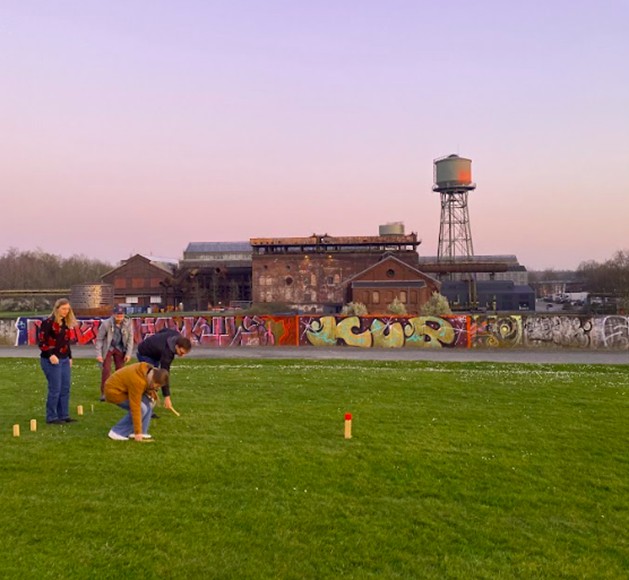
Friday was our last official day of this project, and what better way to end this than with a graduation ceremony? We all got certificates, Shape2gether mugs, some tea, and a plant to grow. For the last official evening together, we had dinner together and then just spent time for the last time with the other students. Everyone was feeling a bit sad because the last summer school had come to an end, but we may have plans to see each other in a year for the final seminar in Olomouc, Czech Republic beginning of 2026.
Final Shape2Gether thoughts and learnings
It feels impossible to choose which summer school was our favorite, since they were all so unique and valuable in their own way. In Norway, we learned how to use completely new technologies in just a few days and experienced a beautiful National Day. In Malta, we heard passionate locals share their insights on sustainable development and saw how turtles were released into the ocean. And lastly, without Shape2Gether, we might never have learned about Bochum’s eventful past or tasted the suspicious vinegar eggs that coal miners used to have for lunch in the past.
Even though all the places we got to visit were amazing, if Tyyne had to choose a favorite, it would be Norway. Especially Tautra and the scenery between the fjords was unforgettable. Trondheim almost felt like home and was definitely a city in which one could see themselves living. We definitely enjoyed the 17th of May celebrations a lot.
Even though the summer schools taught us several concrete, technical skills, for us, the most important lesson was learning to better interact with people from various backgrounds. Misunderstandings and uncomfortable moments were unavoidable in new group settings, but it was ok, because staying in our comfort zone wasn’t the goal for this project. For this reason, Jardar Cyvin’s lecture about group dynamics in Malta stood out as one of the most memorable moments. He highlighted that, especially when solving sustainability issues, it is important to work as a team, but it takes practice to actually learn how to work (and shape :D) together. Therefore, courses like Shape2Gether are important, so we get opportunities as students to improve our communication skills and practice empathy and patience in unfamiliar, but exciting settings.
Besides the communication skills, we also learned a new way to understand geography and the phenomena we study. Seeing new places, meeting new people, and learning about local perspectives taught us a lot. We learned to look at things from a much broader perspective, understand our actions in a new way, and see the connections between nature & humans from a new point of view. That is something we will use in our studies and everyday life going forward.
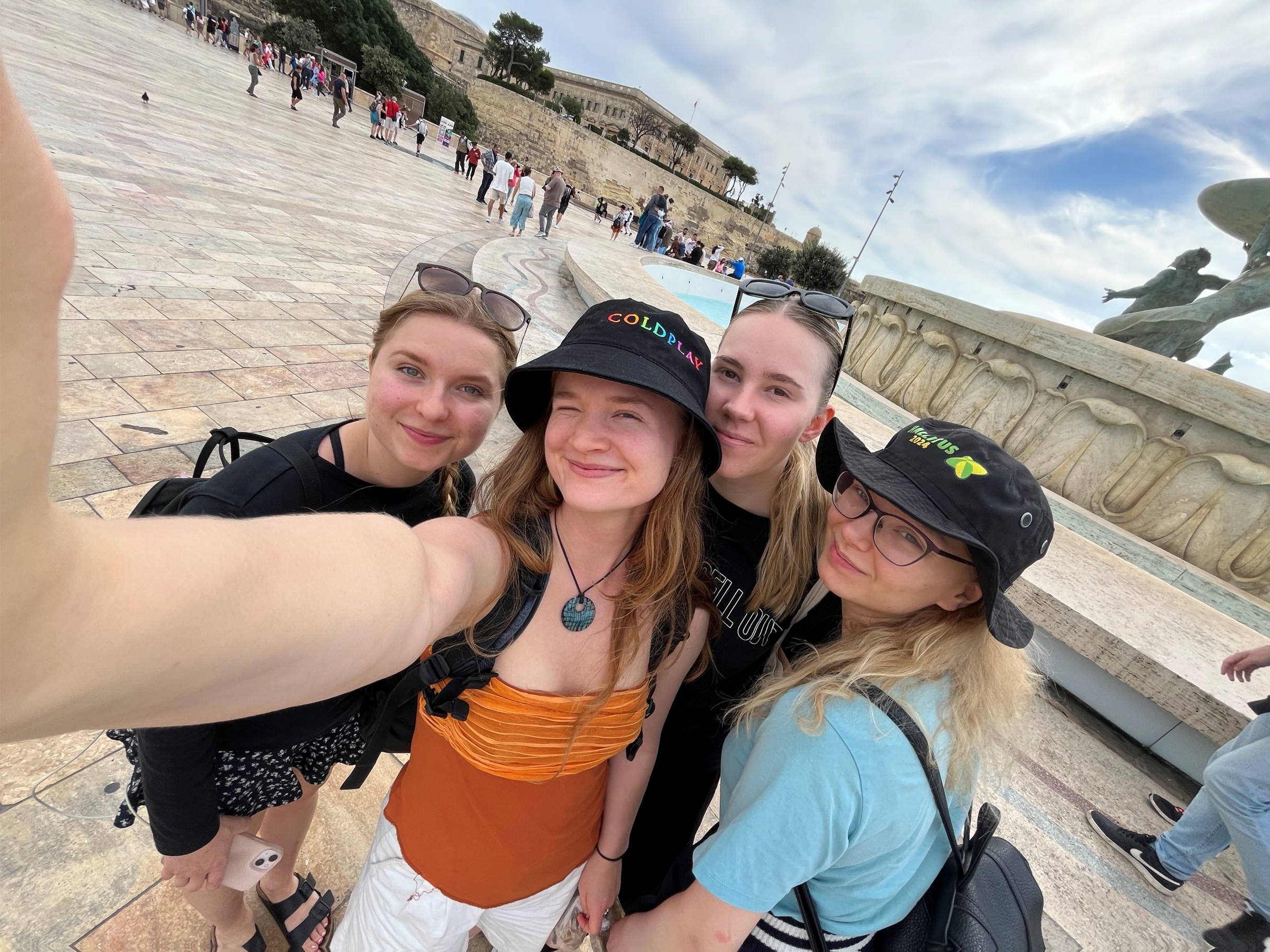
All in all, these Shape2Gether summer schools offered us new experiences, friendships, and knowledge about sustainability and serious games. Our geographical insight and cross-cultural group working skills definitely developed during these summer schools, so thanks to this project for that!